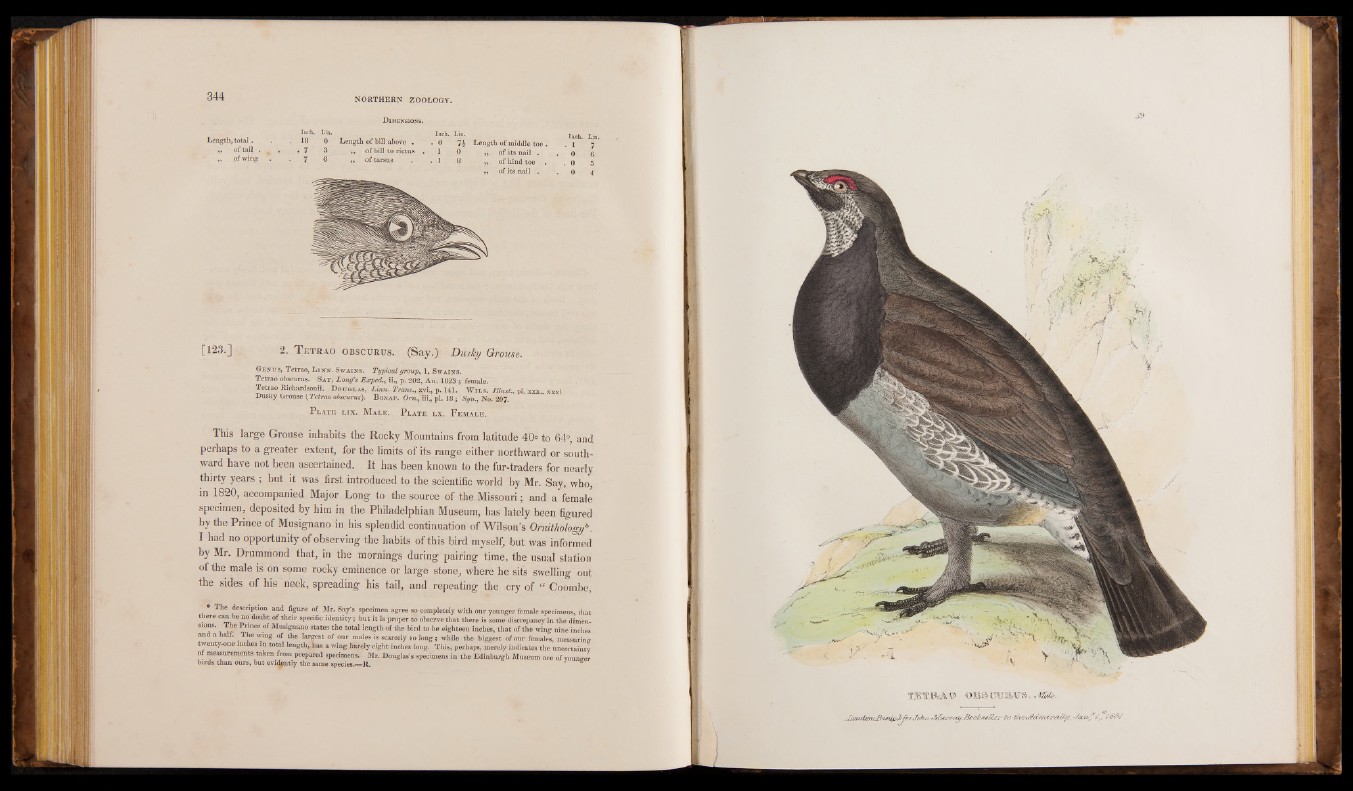
Length, total.
,, of tail .
' „ of wing
Dimensions.
18
Lin.
0 Length of bill above . Inch. Lin.
• 0 7* Length of middle toe . . 7 3 . of bill to rictus . 1 0 . 1 7 7 6 ,, of tarsus _. ,j of its nail . . 0 6 . 1 8 ,, .of hind toe . . . 0 5 „ of its nail . . 0 4
[123.] ,: 2. T etrao obscurds. (Say. ) Dusky Grouse.
Ge n u s, Tetrao, L in n . Sw ain s. Typical group, 1, Sw a in s.
Tetrao obseurus. Sat, Long's Exped., ii., p. 202, An. 1823; female.
Tetrao Richardsonii. D ouglas, Linn. Trans., xvi., p. 141. W il s . Illust., pi, xxx., xxxi.
Dusky Grouse (Tetrao obseurus). B onap. Or»., iii., pi. 18 ; Syn., No. 207.
P late l ix . M ale. P late lx. F em a le.
This large Grouse inhabits the Rocky Mountains from latitude 40° to 64°, and
perhaps to a greater extent, for the limits of its range either northward or southward
have not been ascertained. It has been known to the fur-traders for nearly
thirty years ; but it was first introduced to the scientific world by Mr. Say, who,
in 1820, accompanied Major Long to the source of the Missouri; and a female
specimen, deposited by him in the Philadelphian Museum, has lately been figured
by the Prince of Musignano in his splendid continuation of Wilson’s Ornithology*. I had no opportunity of observing the habits of this bird myself, but was informed
by Mr. Drummond that, in the mornings during pairing time, the usual station
of the male is on some rocky eminence or large stone, where he sits swelling out
the sides of his neck, spreading his tail, and repeating the cry of “ Coombe,
The description and figure of Mr. Say's specimen agree so completely with our younger female specimens, that
there canbeno doubt of their specific identity; but it is proper to observe that there is some discrepancy in the dimen-
S10“S< °f Musignano states the total length of the bird to be eighteen inches, that of the wing nine inches
and a half. The wing of the largest of our males is scarcely so long; while the biggest of our females, measuring
twenty-one inches m total length, has a wing barely eight inches long. This, perhaps, merely indicates the uncertainty
obfir mdse athsuarne mouernst,s btuakt eenv if^ronmtl yp rtehpea sraemd es psepceicmieesn.—s. RM. r. Douglas’s specimens in the Edinburgh Museum are of voum6rer